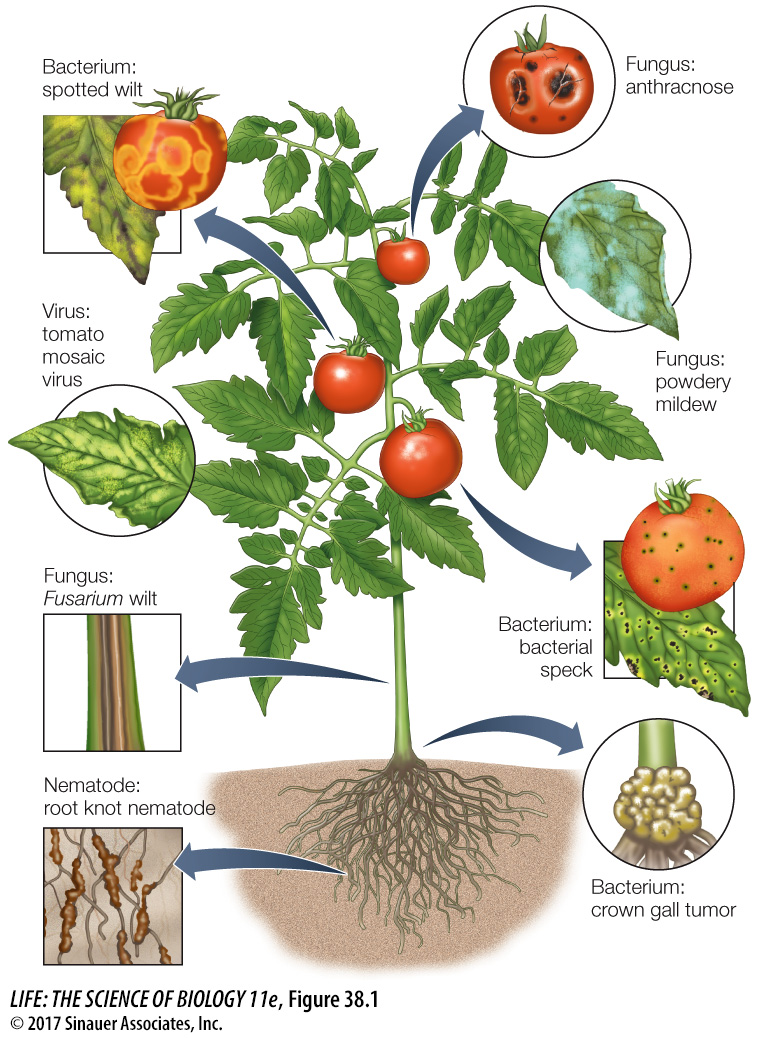key concept 38.1 Plants Respond to Pathogens with Constitutive and Induced Responses
806
Thousands of diseases can affect plants. Each is caused by a different strain of pathogen. Plant pathogens—

Question
Q: As in animals, diseases in plants are caused by a wide variety of organisms. Can you name human diseases caused by the four types of agents described in this figure?
Many human diseases are caused by pathogens. Here we suggest just one of many correct answers for each type of pathogen.
- Virus: Influenza
- Bacterium: Tuberculosis
- Fungus: Candidiasis
- Nematode worm: Hookworm
focus your learning
The plant immune system, which is triggered by elicitors, can produce either general or specific immunity.
Several forms of systemic acquired resistance provide long-
term immunity against various pathogens. Avirulence (Avr) gene products in pathogens interact with resistance (R) genes in plants to trigger immune responses.
Many plant diseases are named for the symptoms rather than the agent that causes them. For example, the condition called “blight,” characterized by browning and death of plant tissues, can be caused by bacteria, fungi, or oomycetes. Just as medical schools have departments of pathology, many universities in agricultural regions have departments of plant pathology.
Successful infection by a pathogen can have significant effects on a plant, reducing photosynthesis and causing massive cell and tissue death. Like the responses of the human immune system (see Chapter 41), the responses by which plants fight off disease are varied and fascinating. Plants and pathogens have evolved together in a continuing “arms race”: pathogens have evolved ways to attack plants, and plants have evolved ways to defend themselves against those attacks.
What determines the outcome of a battle between a plant and a pathogen? The key to success for the plant is to respond to information from the pathogen quickly and massively. Plants use both mechanical and chemical defenses in this effort. These defenses can either be:
Constitutive, always present in the plant, or
Induced, produced in reaction to damage or stress.